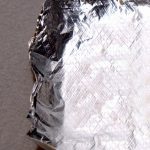EMI-101 Series Part 2 - Determine What Type Of Field Interference You May Have
Preface | Part 1 | Part 2 | Part 3 | Part 4 | Part 5 | Conclusion
PART 2
There are two simple tests that can be performed to identify if a field interference problem is being caused by an Electric field or Magnetic field.
As previously stated in Part 1 of our EMI-101 series, all interconnect cables are natural antennas (radiators and receivers) and they should be the first suspects.

Locate the cable runs associated with the components that are being interfered with and perform the following tests. When performing these tests, you are looking for some level of system operation improvement and not necessarily the elimination of the problem altogether. These tests are only intended to give you a direction as to where the problem lies.
Magnetic Field Interference Problems
- Determine if there are any high-current-loaded power cables in close proximity with the cables that are being affected. If not, proceed to the discussion below on “Electric Field Interference Problems”. If there are high-power cables present, temporarily separate and re-route the corrupted system cables (not the power cables) to gain as much physical separation distance as practical from the high-current power cables. Remember in a magnetic H-field the field strength will drop with the square of the distance, so putting space between these cables should result in an improvement in the corrupted system if an H-field is the problem source.
- If you find that re-routing the cables caused an improvement in the corrupted system performance, then you know that you have a magnetic H-field problem. If you find that the re-routing exercise yielded no positive results, then proceed below to the section titled “Electric Field Interference Problems”.
Electric Field Interference Problems
- Since Electric Field (E-field) problems are not affected to a large degree by cable distance from the radiating (noise) source, moving your cable orientation around is unnecessary if you suspect an E-field problem. What is needed is a quick and inexpensive shielding test.

- Household Aluminum foil from your kitchen can be utilized to mock up a temporary EMI shield that will attenuate an E-field. Wrap up the system cable that is being corrupted by the interference signal with Aluminum foil, taking care to cover as much of the cable run as possible and leaving as few gaps as possible. Use a short length of wire with an Alligator clip on each end to create a grounding jumper. Connect this grounding jumper to one end to the Aluminum foil and the other end to an earth-ground source. Operate the system.
- If you find that shielding the cables caused an improvement in the corrupted system performance, then you know that you have an electric E-field problem and adding a good EMI shield will likely solve the problem. If you find that the shielding exercise yielded no positive results, then you need to look elsewhere in your system. Keep in mind that components other than the cabling can be the culprit. An electronics package that is housed in a nonconductive box (i.e. plastic) is also a potential area for being affected by electric fields.

- Try wrapping it up in the Aluminum foil and providing a ground connection. One easily overlooked area in an electronic package is an Anodized Aluminum box. The box is indeed conductive metal but the Anodized outer surface is non-conductive. Many times, simply grinding off the Anodize coating at a fastener location and creating a good ground pathway to the box can solve an electronic package problem.


















